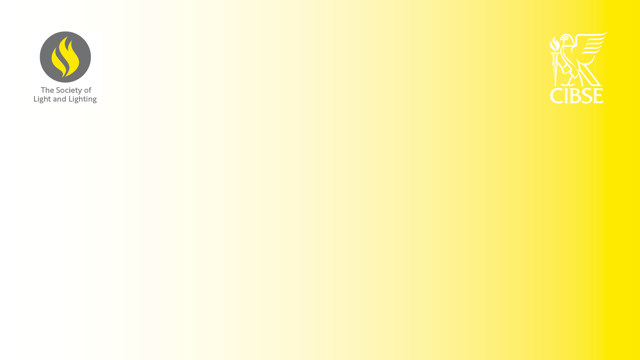
This new edition of the Lighting Guide LG2: Lighting for healthcare premises replaces the 2008 edition. This new edition has been produced to ensure that our guidance is up-to-date with modern lighting practice and to illustrate varying ways of lighting the modern hospital environment. Illumination recommendations have been aligned where appropriate with European Standards on lighting and the SLL Code for Lighting.
The lighting industry has seen an increase in marketing related to lighting for health and productivity (‘human-centric lighting’, ‘circadian lighting’ etc.), with products claiming to enhance performance and productivity, and to avoid disrupting sleep patterns. This edition does not detail or promote these techniques, which will disappoint some, but these claims should be taken with caution and all such products should be carefully evaluated. While the SLL Code for Lighting and BS EN 12464-1 acknowledge the importance of non-visual effects of light on health and wellbeing, the SLL warns that research in this area is still very limited and the existence of beneficial effects due to changing the colour and level of electric light during the course of a day has yet to be unequivocally demonstrated.
Ultimately it should be remembered that the key objective of all these measures is to define the quantity and quality of light and that it should replicate as close as possible the conditions under which we have evolved. Good design principles should always be followed with priority given to daylight and complemented by electric lighting. Note also that daylight has unique and complex qualities, to some extent still not fully understood and for which metrics are not agreed; it cannot be replaced by electric lighting and should therefore be given priority.
Contents:
Introduction
Part A: General recommendations
1 Design considerations
1.1 General
1.2 Lighting and colour
1.3 Designed illuminance and energy considerations
1.4 Position of measurement and UGR values
1.5 Light source groups
1.6 Type of control
1.7 Emergency lighting classification
1.8 General lighting schedule
Part B: Specific recommendations
2 General
3 Public areas
3.1 Entrances
3.2 Entrance halls and waiting areas
3.3 Lift lobbies and lift cars
3.4 Reception and enquiry desks
3.5 Circulation spaces
3.6 Dining, cafeteria and breakout areas
3.7 Changing rooms, cubicles, toilets, bath, wash and shower rooms
3.8 Wards and general clinical areas
3.9 Bedded (ward) areas, general
3.10 Electric light in bedded areas
3.11 Ward lighting: technical requirements
3.12 Examination lighting
3.13 Deep plan wards
3.14 Specialised wards
3.15 Nurse stations (staff bases)
3.16 Ward corridors
3.17 Dayrooms, play areas, ward dining areas and staff rooms
4 Clinical areas and operating departments
4.1 General
4.2 Operating theatres
4.3 Ancillary areas within operating departments
5 Specialised areas
5.1 Accident and Emergency (A&E or Casualty)
5.2 Audiology
5.3 Clean areas (pharmacy and radio-pharmacy)
5.4 Dentistry
5.5 Diagnostic imaging (MRI/CT scanning/PET/ultrasound/X-ray)
5.6 Examination rooms
5.7 Hydrotherapy pools
5.8 Maternity facilities
5.9 Medical records
5.10 Mortuaries
5.11 Occupational therapy and physiotherapy units
5.12 Ophthalmology
5.13 Pathology
5.14 Radiotherapy
5.15 Sensory rooms and facilities
5.16 Sterile services units (SSU)72
5.17 Sterilising and disinfecting units
6 Lighting for mental health
6.1 Overview
6.2 General lighting systems
6.3 Types of facilities
7 Healthcare centres and standalone facilities
8 Exterior lighting
8.1 Introduction
8.2 Energy
8.3 Light pollution
8.4 Roadway lighting
8.5 Pedestrian ways
8.6 Car parking
8.7 Helicopter landing pads
8.8 Sign lighting
8.9 Ambulance drop-off
8.10 Safety and security lighting
9 Emergency lighting
9.1 Emergency escape lighting
9.2 Emergency safety lighting
9.3 Standby lighting
9.4 Emergency lighting luminaires
9.5 Testing of emergency lighting
9.6 Escape route signage
10 Lighting controls
10.1 Standards, legislation and guidelines
10.2 Energy
10.3 Visual aspects
10.4 Maintenance
10.5 Types of control
11 Light sources
11.1 Daylight
11.2 Artificial light sources
Appendix: Luminaire maintenance schedule
Acknowledgements:
Author: Nicholas Bukorovic (MBA Consulting Engineers)
Task Group: Andrew Bissell (Director of light4 Cundall); Jemima Unwin (Lecturer in light and lighting, UCL); Nigel Monaghan (Chief Lighting Engineer, ASD Lighting); Tim Bowes (Lighting Technology Development Manager, Whitecroft Lighting)